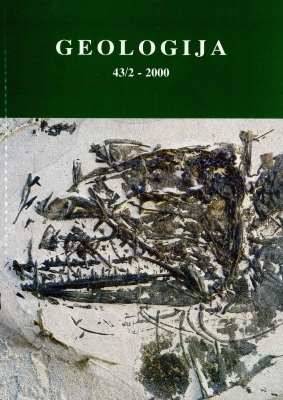Upper Pliocene alkali basalt at Grad, northeastern Slovenia
DOI:
https://doi.org/10.5474/geologija.2000.015Abstract
The Grad area, northeastern Slovenia is characterised by Upper Pliocene volcanic activity, which produced minor alkali basaltic lava flows and scoria deposits. In the late-stage of volcanic activity, hydrovolcanism predominated, and it produced pyroclastic surge deposits. Volcanism occurred on the surface of alluvial fan. Small lava flows were partially mixed with abundant loose sediments - gravels, sands and silts forming peperites. Owing to rapid cooling, peperites were easily autobrecciated. Autoclasts were easily redeposited by large debris flows, triggered by late-stage hydrovolcanic activity, and also, by fluvial currents. Today, the original lava flows are not preserved any more, at least on the surface. They are encountered only as boulders and cobbles in debris flow deposits, or as pebbles in volcaniclastic sandstones.Downloads
How to Cite
Kralj, P. (2000). Upper Pliocene alkali basalt at Grad, northeastern Slovenia . Geologija, 43(2), 213–218. https://doi.org/10.5474/geologija.2000.015
Issue
Section
Articles

